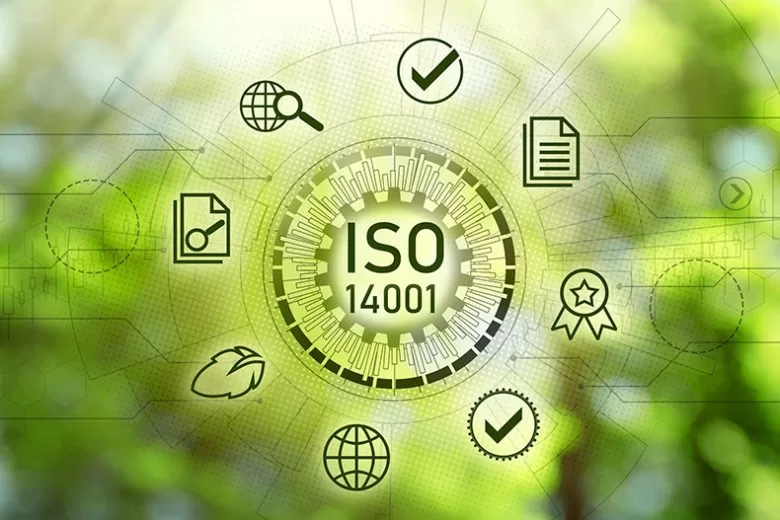ISO 14001 Certification in Uganda: A Strategic Guide for Environmental Compliance and Business Growth
What is ISO 14001
ISO 14001 is the internationally recognized standard for Environmental Management Systems (EMS). It provides a structured framework for organizations to manage their environmental responsibilities in a systematic and sustainable manner. In Uganda, where environmental challenges intersect with rapid industrial growth, ISO 14001 certification is increasingly seen as a strategic asset for businesses seeking regulatory compliance, operational efficiency, and global credibility.
This guide explores the relevance, process, benefits, and implementation strategies for ISO 14001 certification in Uganda, offering insights for enterprises, government agencies, and consultants aiming to align with global environmental standards.
Understanding ISO 14001
ISO 14001 is part of the ISO 14000 family of standards developed by the International Organization for Standardization. It focuses on environmental management systems and is applicable to any organization, regardless of size, sector, or location.
The standard emphasizes continual improvement, legal compliance, and the reduction of environmental impacts. It does not prescribe specific environmental performance criteria but provides a framework for organizations to set and achieve their own environmental objectives.
Relevance of ISO 14001 in Uganda
Uganda faces a range of environmental challenges, including deforestation, water pollution, waste management issues, and climate change impacts. The government has enacted several environmental laws and policies, such as the National Environment Act and regulations under the National Environment Management Authority (NEMA).
ISO 14001 certification complements these national efforts by helping organizations:
- Align with Uganda’s environmental regulations
- Demonstrate commitment to sustainability
- Improve stakeholder confidence
- Access international markets and funding opportunities
Industries such as agriculture, manufacturing, construction, energy, and tourism are particularly well-positioned to benefit from ISO 14001 implementation.
Benefits of ISO 14001 Certification
Regulatory Compliance
ISO 14001 helps organizations identify and comply with applicable environmental laws and regulations, reducing the risk of fines, penalties, and reputational damage.
Operational Efficiency
By optimizing resource use and waste management, certified organizations often experience cost savings and improved productivity.
Market Access
ISO 14001 certification is recognized globally and can be a prerequisite for participating in international tenders, supply chains, and partnerships.
Risk Management
The EMS framework enables organizations to proactively identify environmental risks and implement controls to mitigate them.
Stakeholder Trust
Certification signals environmental responsibility to customers, investors, regulators, and the public, enhancing brand reputation and stakeholder engagement.
ISO 14001 Certification Process in Uganda
The certification process typically involves the following stages:
1. Gap Analysis
A preliminary assessment is conducted to compare the organization’s current practices with ISO 14001 requirements. This helps identify areas for improvement and informs the implementation strategy.
2. EMS Development
Organizations develop an Environmental Management System tailored to their operations. This includes:
- Environmental policy
- Objectives and targets
- Roles and responsibilities
- Operational controls
- Emergency preparedness
- Monitoring and measurement procedures
3. Training and Awareness
Staff are trained on EMS procedures, environmental responsibilities, and compliance requirements. Awareness programs ensure that all employees understand their role in achieving environmental objectives.
4. Documentation
Comprehensive documentation is prepared, including manuals, procedures, records, and audit checklists. This forms the backbone of the EMS and supports internal and external audits.
5. Internal Audit
An internal audit is conducted to evaluate the effectiveness of the EMS and identify non-conformities. Corrective actions are implemented to address any gaps.
6. Management Review
Top management reviews the EMS performance, ensuring alignment with strategic goals and regulatory requirements. This step reinforces leadership commitment and continual improvement.
7. Certification Audit
An accredited certification body conducts a two-stage audit:
- Stage 1: Documentation review and readiness assessment
- Stage 2: On-site audit to verify implementation and compliance
If successful, the organization is awarded ISO 14001 certification, typically valid for three years with annual surveillance audits.
Accredited Certification Bodies in Uganda
Several international and regional certification bodies operate in Uganda, offering ISO 14001 services
AlohaX System is one of the top ISO 14001 certification in Kampala Uganda
Implementation Challenges and Solutions
Limited Awareness
Many Ugandan businesses are unfamiliar with ISO standards. Awareness campaigns, workshops, and government incentives can help bridge this gap.
Resource Constraints
Small and medium enterprises (SMEs) may lack the financial and human resources to implement ISO 14001. Scalable EMS models and phased implementation strategies can make certification more accessible.
Documentation Burden
Preparing EMS documentation can be time-consuming. Templates, automation tools, and expert consultants can streamline the process.
Regulatory Complexity
Navigating Uganda’s environmental laws can be challenging. Partnering with local legal experts and aligning EMS procedures with NEMA guidelines ensures compliance.
Sector-Specific Applications
Agriculture
ISO 14001 helps agricultural enterprises manage pesticide use, water conservation, and soil health. Certification enhances export readiness and compliance with international food safety standards.
Manufacturing
Manufacturers benefit from waste reduction, energy efficiency, and pollution control. ISO 14001 supports cleaner production and sustainable supply chain practices.
Construction
Construction firms use ISO 14001 to manage site impacts, material usage, and environmental risks. Certification improves project approvals and stakeholder confidence.
Energy
Energy companies apply EMS principles to manage emissions, resource use, and environmental risks. ISO 14001 supports renewable energy initiatives and regulatory compliance.
Tourism
Tourism operators use ISO 14001 to promote eco-friendly practices, conserve biodiversity, and enhance visitor experiences. Certification aligns with sustainable tourism goals.
Integration with Other ISO Standards
ISO 14001 can be integrated with other management systems for greater efficiency:
- ISO 9001 (Quality Management)
- ISO 45001 (Occupational Health and Safety)
- ISO 27001 (Information Security)
- ISO 22000 (Food Safety)
Integrated management systems reduce duplication, streamline audits, and enhance organizational performance.
Government and NGO Support
Uganda’s government and development partners support environmental initiatives through:
- Grants and subsidies for EMS implementation
- Capacity-building programs
- Public-private partnerships
- Environmental awards and recognition
Organizations can leverage these resources to offset certification costs and enhance impact.
Strategic Recommendations for Ugandan Enterprises
Conduct a Readiness Assessment
Evaluate current environmental practices, legal obligations, and stakeholder expectations. This informs the scope and objectives of the EMS.
Engage Expert Consultants
Partnering with experienced ISO consultants ensures efficient implementation, documentation, and audit preparation.
Localize EMS Procedures
Adapt EMS procedures to Uganda’s regulatory context, cultural norms, and operational realities. This enhances relevance and effectiveness.
Build Internal Capacity
Train staff, assign EMS roles, and foster a culture of environmental responsibility. Internal ownership drives long-term success.
Monitor and Improve
Use KPIs, audits, and feedback mechanisms to track EMS performance and drive continual improvement.
Conclusion
ISO 14001 certification is a powerful tool for Ugandan organizations seeking to enhance environmental performance, comply with regulations, and compete globally. By adopting a structured EMS, businesses can reduce risks, improve efficiency, and build stakeholder trust.
With growing awareness, government support, and access to expert consultants, ISO 14001 is increasingly within reach for enterprises across Uganda. Whether you’re a manufacturer in Kampala, a tourism operator in Entebbe, or a government agency in Gulu, ISO 14001 offers a pathway to sustainable growth and international recognition.
For strategic implementation, proposal drafting, or regional adaptation, organizations should consider tailored EMS models, integrated systems, and consultative partnerships that align with Uganda’s environmental priorities and global best practices.
ISO 14001 certification Uganda
- Environmental Management System Uganda
- ISO 14001 consultants Kampala
- EMS certification Uganda
- ISO 14001 training Kampala
- ISO certification providers Uganda
- ISO 14001 audit Uganda
- ISO 14001 implementation Uganda
- Best ISO consultants Uganda
- ISO 14001 Kampala Uganda






